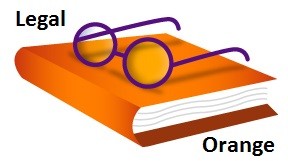Those who stay up to date with the Law Gazette will have seen the recent article about proposed changes to PI claims (https://www.lawgazette.co.uk/news/justice-minister-backs-litigants-in-person-to-handle-pi-claims/5064369.article)
There is obviously some merit in increasing the personal injury limits but so many of the commentators at the end of the article make accurate observations.
A lot of people are going to be in a tough position.
Take for example 2 cars involved in a collision causing bent metal and also results in separate injury to a nearby pedestrian walking on the pavement.
On the basis someone (or both) of the drivers is liable…
Driver 1 will have an insurer with in-house claims team, in-house counsel and external legal panel.
Driver 2 will have the same.
Both drivers will have the benefit of access to legal advice. If they cause a big enough complaint the insurer will panic about Treating The Customer Fairly and tell their panel firm to claim for damages to the bent metal and throw in the personal injury claim as well to keep their policyholder placated. It’s easier to push around a panel law firm who depends upon you than add to your policyholder complaint statistics.
The average pedestrian in this example has no immediate lawyer access and returns home praying they have LEI cover. If not, they have to learn the law and procedure to take on 1 or 2 sets of lawyers. A tough challenge. I am not sure a beginners guide to law will cover Sanderson & Bullock Orders.
They could go to the CAB. I am not confident law students and other non-qualified helpers can take on 2 sets of lawyers; plus they are drowned with debt claims and appeals against benefit sanctions.
CMCs? Another option. Hand over 30% of your damages or more. It’s just like what happened in employment tribunals when they allowed rights of audience to anybody and they deducted a nice big chunk of damages from settlements.
So what happens? Realistically the pedestrian has to accept a reduced sum in damages by handling it alone or hand over a percentage of their damages to someone else such as a CMC. Not really access to justice.
Staying on that track. Say the pedestrian’s damages are worth £2,500.00 when they’re hit by the car.
What if the pedestrian was involved in an accident at work shortly beforehand and suffered a similar value claim? They could pursue a claim against their employer’s EL policy with better access to justice. This is because RTA claims will have a £5k limit whereas non-RTA will have a £2k limit. Solicitors will still be willing to run the EL claims as they can make money (using paralegal factories).
Those in low value personal injury who aren’t already preparing their exit strategy should be looking at their options carefully.
Over and out.
Legal Orange.
